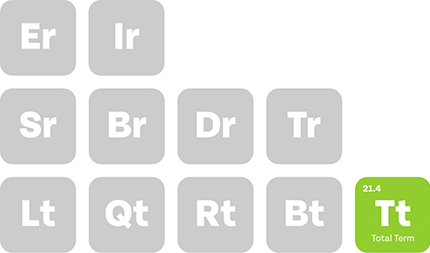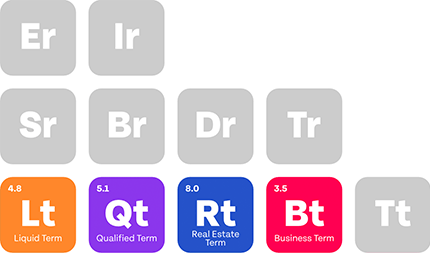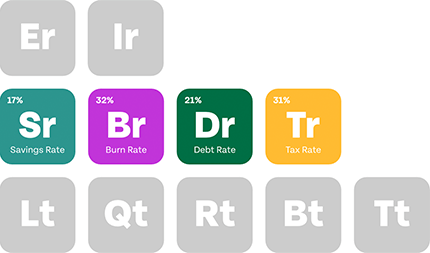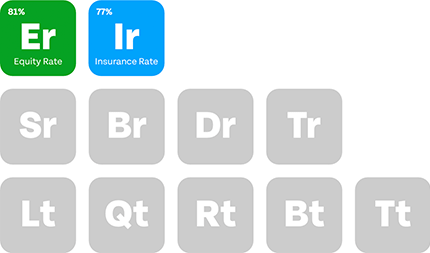With the average U.S. home price around $360,000, most Americans cannot save up to buy a home outright.
That’s why a staggering 80% of the 80.10 million homeowners in the United States financed their purchase through home loans.
A home loan allows you to split the cost of a home purchase into monthly mortgage payments.
Here, we’ll break down how mortgage payment works, from its basic components to factors that affect it and how to calculate it.
We’ll also cover tips for managing your loan effectively.
Key Takeaways
- Mortgage payments consist of principal, interest, taxes, and insurance (PITI).
- Loan terms and interest rates significantly affect monthly payments and total costs.
- Factors like credit score, down payment, and LTV ratio impact loan affordability.
- Effective management includes emergency funds, refinancing, and negotiating interest rates.
Table of Contents
What Is Mortgage Payment?
A mortgage payment is a monthly installment a homeowner pays to a lender to offset a home purchase loan.
The total mortgage payment ensures the gradual repayment of the loan while covering ongoing property-related expenses.
Each payment reduces the loan balance and gradually builds equity in the home.
What are The Components of Mortgage Payment?
A mortgage payment consists of four main components: principal, interest, property taxes, and insurance, called PITI.
Throughout this guide, we’ll be using a $300,000 home loan to show you how mortgage payment works.
1. Principal
The principal is the original amount you borrowed from the lender to take out a mortgage. For a $300,000 mortgage, the principal is $300,000.
Each month, part of your mortgage payment goes towards repaying this principal, and another part pays interest on the loan.
Loans are designed so that the portion of each payment applied to the principal starts small and gradually increases over time.
2. Interest
Interest is what the mortgage lender charges you for borrowing money. It’s the lender’s reward for taking the risk.
Over time, as the principal decreases, the interest portion of your payment also shrinks.
Your Mortgage interest is calculated as a percentage of the loan amount.
If the interest rate on our $300,000 mortgage is 5%, our monthly interest payment for the first month would be $1,250. That’s 5% of $300,000 divided by 12.
3. Taxes
Property taxes are assessed by your local government and are usually included in your mortgage payment.
Although these taxes are calculated yearly, they are divided into the number of monthly mortgage payments in a year.
An annual property tax of $6,000 will add $500 to your monthly PITI payment. These funds are held in an escrow account and paid to the taxing authority when due.
4. Insurance
Mortgage insurance protects your property from risks like fire, theft, and natural disasters.
For an annual insurance premium of $1800, you’ll pay $150 monthly as part of your mortgage payment. Like property taxes, these funds are held in an escrow account.
Your lender may request private mortgage insurance (PMI) if your down payment is less than 20%.
Private mortgage insurance is calculated as a percentage of the loan amount and adds extra costs to your monthly payment.
You can cancel PMI once you’ve built enough equity (usually 20% of the home value) in your home.
Amortization: How Loan Term Affects Mortgage Payment
Amortization is the process of spreading out a loan into a series of fixed payments over time.
In a mortgage, each payment is divided between two components, principal and interest.
With a fixed-rate mortgage, the total monthly mortgage payment remains constant, but the proportion of principal and interest changes over the loan’s lifetime.
In the early years, a larger portion of each payment goes towards interest, while later payments increasingly reduce the principal.
The most common amortization periods for mortgages are 30 and 15 years.
While the 30-year mortgage is still the most popular option in the U.S., 15-year fixed-rate mortgages are also becoming increasingly popular due to the savings they offer in interest costs and the faster path to homeownership.
Generally, a longer amortization period results in smaller monthly payments, but you will pay more in interest over the life of the loan.
Conversely, a shorter amortization period leads to larger monthly payments but saves you money in interest.
How to Calculate Mortgage Payment?
Calculating your mortgage payment is an important first step when purchasing a home. Fortunately, you don’t have to deal with the complex mortgage payment formula.
You can use an online mortgage calculator to check how variables such as loan amount, interest rate, and terms affect your mortgage payment.
Below, we’ll show you how the amortization schedule affects mortgage payments using the ERATE Mortgage Calculator.
For this example, we use a $300,000 mortgage with a 7% fixed interest rate over 15 and 30-year periods.
Here’s an abridged version of the results in tabular forms.
Table 1: 30-Year Fixed Rate Loan
| Month | Beginning Balance | Principal | Interest | Payment | Ending Balance |
| 1 | $300,000 | $246 | $1,750 | $1,996 | $299,754 |
| 2 | 299,754 | 247 | 1,749 | 1,996 | 299,507 |
| 3 | 299,507 | 249 | 1,747 | 1,996 | 299,258 |
| 240 | 172,888 | 987 | 1,009 | 1,996 | 171,900 |
| 300 | 102,197 | 1,400 | 596 | 1,996 | 100,797 |
| 360 | 1,984 | 1,984 | 12 | 1,996 | 0 |
Source: ERATE Mortgage Calculator
Table 2: 15-Year Fixed Rate Loan
| Month | Beginning Balance | Principal | Interest | Payment | Ending Balance |
| 1 | $300,000 | $946 | $1,750 | $2,696 | $299,054 |
| 2 | 299,054 | 952 | 1,744 | 2,696 | 298,102 |
| 3 | 298,102 | 958 | 1,739 | 2,696 | 297,144 |
| 60 | 233,572 | 1,334 | 1,363 | 2,696 | 232,238 |
| 120 | 138,069 | 1,891 | 805 | 2,696 | 136,178 |
| 180 | 2,681 | 2,681 | 16 | 2,696 | 0 |
Source: ERATE Mortgage Calculator
As you can see, with the 30-year fixed rate, the monthly payment is lower, at $1,996. This makes the loan more manageable.
However, you’ll pay a total of $418,527 in interest.
For the 15-year rate, your estimated monthly payment is $2,696.48, and you will pay $185,367 in interest over the life of the loan.
This represents a savings of $233,169 on the loan.
Note that the calculation above does not include property tax and mortgage insurance costs.
Other Mortgage Payment Options
In the example above, you’ll notice that the combined principal and interest payment is the same for the entire loan term.
Only the amount that goes into either change every month.
While that’s the most common mortgage payment structure, called traditional or fixed-rate payment, there are other types worthy of mention. Let’s go through them briefly.
Adjustable Rate Mortgage
An adjustable-rate mortgage starts with a fixed interest rate for a set number of years (often 3 -10 years) ), after which the rate adjusts periodically based on market conditions.
This rate adjustment can result in either higher or lower monthly payments, depending on the prevalent market rate.
To protect borrowers from extreme fluctuations, most ARMs have rate caps that limit the extent of increase in a single adjustment and over the loan term.
Interest rates during the fixed-rate period of ARMs are often lower than for traditional mortgages.
That’s why it’s an attractive option for borrowers who intend to refinance or sell their home before the adjustment period begins.
Accelerated Mortgage
With an accelerated mortgage, you can pay off your home loan faster than the standard repayment schedule and save significantly on interest over the life of your mortgage.
This typically involves increasing the frequency of payment (bi-weekly instead of monthly) or adding extra payments towards the principal balance every month.
What Factors Affect Your Mortgage Payment?
Above, you’ve seen how loan terms affect your mortgage payment. However, there are other factors you should be aware of.
1. Interest Rate
Your mortgage interest rate is one of the most critical factors that directly impact your mortgage payment.
A higher rate increases your mortgage payments, while a lower rate reduces it, which makes borrowing more affordable.
We’ll use a $300,000 mortgage as an example. At an interest rate of 7%, the monthly payment on a 30-year mortgage loan would be approximately $1,995.
Of this amount, $1,750 goes towards interest, and $245 is applied to the principal.
For the same loan at a 5% interest rate, the monthly payment decreases to about $1,610. In this case, $1,250 covers interest, while $360 goes to the principal.
This means that at a lower interest rate, more of your payment goes towards reducing the principal.
2. Down Payment
A down payment is the upfront cash payment you make when taking out a mortgage.
It’s expressed as a percentage of the loan amount and significantly lowers your mortgage payment and the overall cost of your loan.
While a 20% down payment is the industry standard, some lenders can allow you to go lower.
Only that, you’ll need private mortgage insurance. As of 2024, the average down payment for first-time homebuyers is just 8%.
A larger down payment results in lower monthly payments and reduces the overall cost of your mortgage loan.
3. Credit Score
A credit score is a numerical representation of creditworthiness. It’s what lenders use when determining your mortgage interest rate.
Borrowers with higher credit scores qualify for lower interest rates, which saves them thousands of dollars over the offer of the loan.
Conversely, a lower credit score often results in higher interest rates, which leads to higher monthly payments and total cost.
4. Loan-to-Value Ratio
The loan-to-value ratio is the loan amount compared to the home’s appraised value.
A high LTV ratio means you are borrowing a larger portion of the home’s purchase price, which can lead to higher interest rates and monthly payments.
Lenders prefer lower LTV ratios as they present less risk.
So, to protect themselves from the risks of high LTV, they give out loans with higher interest rates.
Tips for Effective Mortgage Payment Management
You can take the stress out of your home-buying journey by managing mortgage payments effectively. Here are some tips.
1. Build a Robust Emergency Fund
Emergency funds protect you against unexpected financial challenges that could disrupt your mortgage payment.
Experts recommend saving at least three to six months’ worth of living expenses, including your mortgage payment.
The goal is to have enough cushioning funds to avoid missed payments and potential penalties, even during life challenges such as a job loss or medical emergency.
2. Explore Refinancing Options
Refinancing your mortgage simply means replacing your current loan with a new one, either to secure a lower interest rate or switch to a longer loan term.
Many homeowners often explore this option when interest rates drop, or when their credit score improves and could get them a better mortgage loan deal.
Before refinancing, it’s important to compare the refinance loan cost to the potential savings, to ensure it’s a wise bet.
3. Negotiate Lower Interest Rate
A tiny decrease in your mortgage interest rate can reduce your mortgage payment and help you save significantly on the cost of your loan.
But most borrowers don’t even know they can negotiate their interest rate.
With a good payment history and a high credit score, you can contact your lender to discuss bringing down the interest rate.
4. Appeal Your Property Tax Assessment
If you believe your property taxes are disproportionately high, you can challenge the assessment through a formal appeal process.
Once you can provide substantial evidence that your property is overvalued, your local tax authority may review and reduce your property taxes.
A successful appeal means a lower annual tax bill, which lowers monthly payments.
Wrapping up
Buying a home is one of the single largest financial investments you’ll ever make. Chances are, you’ll finance this purchase through a mortgage.
We’ve covered how mortgage payment works, the factors that affect it, and how to calculate them in different scenarios.
Now, you should be able to evaluate your situation and plan your home-buying budget according to your income.
Need some extra help? Contact us at Physicians Thrive.







































